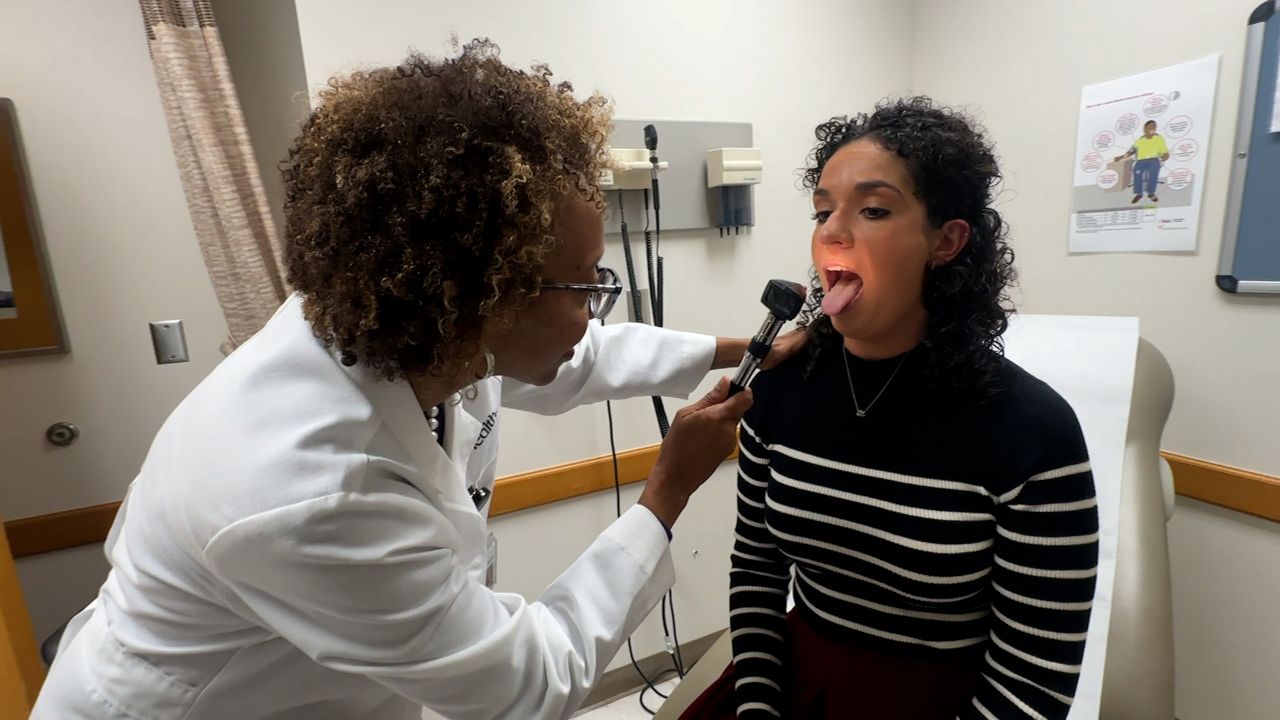World
Here’s how often each seed makes the Men’s College World Series

In a sport as wildly unpredictable as baseball, just how important is a seed-line when it comes to paving a path to the Men’s College World Series?
One part to the answer: No. 1 regional seeds have accounted for just under 75 percent of all MCWS participants since the NCAA baseball tournament’s current format was introduced in 1999.
MCWS 2023: Updates from the 2023 DI baseball championship | View the bracket
So, do the top-ranked teams have a fast track to Omaha? According to the data, more often than not, yes. But does the team at the very top of the rankings always win it all? History says no. We’ll get to that later. First, let’s review the tournament format:
The current NCAA tournament system splits the initial 64-team field into 16 four-team regionals. Each quartet is seeded Nos. 1-4, which determines the double-elimination regional schedule. That means we have 16 1-seeds, 16 2-seeds, 16 3-seeds and 16 4-seeds at the start of the tournament.
Here’s how regional seed representation has been spread out in the eight-team Men’s College World Series field each year from 1999-2023.
How often each regional seed advances to the Men’s College World Series (1999-2023):
| year | 1-seeds | 2-seeds | 3-seeds | 4-seeds |
|---|---|---|---|---|
| 2024 | 7 | 0 | 1 | 0 |
| 2023 | 5 | 2 | 0 | 1 |
| 2022 | 4 | 3 | 1 | 0 |
| 2021 | 6 | 1 | 1 | 0 |
| 2020 | N/A | N/A | N/A | N/A |
| 2019 | 5 | 1 | 2 | 0 |
| 2018 | 6 | 1 | 1 | 0 |
| 2017 | 6 | 1 | 1 | 0 |
| 2016 | 4 | 4 | 0 | 0 |
| 2015 | 6 | 1 | 1 | 0 |
| 2014 | 5 | 2 | 1 | 0 |
| 2013 | 8 | 0 | 0 | 0 |
| 2012 | 5 | 1 | 1 | 1 |
| 2011 | 7 | 0 | 1 | 0 |
| 2010 | 7 | 1 | 0 | 0 |
| 2009 | 5 | 2 | 1 | 0 |
| 2008 | 7 | 0 | 0 | 1 |
| 2007 | 3 | 3 | 2 | 0 |
| 2006 | 7 | 1 | 0 | 0 |
| 2005 | 7 | 1 | 0 | 0 |
| 2004 | 6 | 1 | 1 | 0 |
| 2003 | 6 | 1 | 1 | 0 |
| 2002 | 7 | 1 | 0 | 0 |
| 2001 | 7 | 1 | 0 | 0 |
| 2000 | 5 | 2 | 1 | 0 |
| 1999 | 7 | 1 | 0 | 0 |
| TOTAL: | 141 (73.4%) | 32 (16.7%) | 16 (8.3%) | 3 (1.6%) |
According to over two decades worth of data, an average of six out of eight Men’s College World Series participants each year are No. 1 regional seeds. The 2013 MCWS remains the only example where all eight participants came from the top-seed line. In 2023, five of the eight were regional 1-seeds.
There have been eight instances of seven No. 1 seeds to make the final field. That includes 2008, when No. 4 seed Fresno State was the outlier. And guess what? Those Cinderella Bulldogs went on to have one of the most surprising title runs in MCWS history. Oral Roberts became the third 4-seed to ever reach Omaha in 2023.
Conversely, 2007 saw just three No. 1 seeds in Omaha — a 21-year low-mark. Oregon State became the first 3-seed under the current format to win a national title that year, beating 1-seed North Carolina in the finals.
We could further examine seed performance in the NCAA baseball tournament and Men’s College World Series by looking at national seeds. This concept was also introduced in 1999. Starting that year, the selection committee provided designations for the top eight teams in the field — the first half of regional No. 1 seeds. These teams automatically host a Super Regional, if they advance that far.
The 1-8 labels were provided from 1999-2017. Starting with the 2018 NCAA tournament, the national seed reveal was expanded to 1-16. Now we know exactly where every No. 1 regional seed lines up.
For the purpose of this historical examination though, let’s just focus on the top eight. Here’s a breakdown of how many have qualified for, and ultimately won, the MCWS since 1999:
| seed no. | Mcws appearances | MCWS TITLES |
|---|---|---|
| 1 | 15 | 1 |
| 2 | 17 | 3 |
| 3 | 15 | 2 |
| 4 | 11 | 1 |
| 5 | 14 | 2 |
| 6 | 11 | 0 |
| 7 | 12 | 0 |
| 8 | 12 | 0 |
| TOTAL: | 107 | 9 |
This table includes representatives in the 2023 Men’s College World Series, which runs from June 16-26. No. 1 Wake Forest, No. 2 Florida, No. 5 LSU, No. 7 Virginia and No. 8 Stanford were the seeded teams to make the field, joined by three unseeded teams — TCU, Tennessee and Oral Roberts.
You may notice something that certainly stands out at the top of the chart. Only one No. 1 overall seed has actually won the national championship. That honor belongs to Miami (FL) in 1999, the very first year of the current tournament format.
The 1999 MCWS was also one of the closest times we saw all chalk in Omaha, 1 through 8. Oklahoma State, a regional 2-seed, was the only non-national seed in that year’s field. In 2001, it was 2-seed Tennessee that was the lone outlier.
The drought of top national seeds winning in Omaha stands at 22 years after Tennessee failed to make the MCWS field in 2022. The Volunteers are the ninth No. 1 national seed not to advance to the Men’s College World Series. Only two have reached the final series once getting there. Wake Forest will look to break that trend in 2023.
So, who does win in Omaha? Here are the DI baseball national champions from 1999-2022, including their regional and national seeds:
*Reminder: National seeds were labeled 1-8 from 1999-2017. This was expanded to 1-16 in 2018.
| year | champion | regional seed | national seed |
|---|---|---|---|
| 2022 | Ole Miss | 3 | N/R |
| 2021 | Mississippi State | 1 | 7 |
| 2020 | N/A | N/A | N/A |
| 2019 | Vanderbilt | 1 | 2 |
| 2018 | Oregon State | 1 | 3 |
| 2017 | Florida | 1 | 3 |
| 2016 | Coastal Carolina | 2 | N/R |
| 2015 | Virginia | 3 | N/R |
| 2014 | Vanderbilt | 1 | N/R |
| 2013 | UCLA | 1 | N/R |
| 2012 | Arizona | 1 | N/R |
| 2011 | South Carolina | 1 | 4 |
| 2010 | South Carolina | 1 | N/R |
| 2009 | LSU | 1 | 3 |
| 2008 | Fresno State | 4 | N/R |
| 2007 | Oregon State | 3 | N/R |
| 2006 | Oregon State | 1 | N/R |
| 2005 | Texas | 1 | N/R |
| 2004 | Cal State Fullerton | 2 | N/R |
| 2003 | Rice | 1 | 5 |
| 2002 | Texas | 1 | 5 |
| 2001 | Miami (Fla.) | 1 | 2 |
| 2000 | LSU | 1 | 2 |
| 1999 | Miami (Fla.) | 1 | 1 |
A top eight national seed won the Men’s College World Series for the first five years after the process was introduced. The top two overall seeds took the title in each of the first three seasons.
That trend has changed course in the following 15 years. Since 2004, 12 of the 18 national champions weren’t nationally seeded — including six champs who didn’t even host regionals. In 2022, Ole Miss’ run from regional No. 3 seed to national championship broke a four-tournament streak of national seeds winning it all.
What the data shows us is that while regional hosts have accounted for three-quarters of all MCWS participants and eventual national champions since 1999, a top-eight national seed doesn’t always guarantee success once in Omaha.







